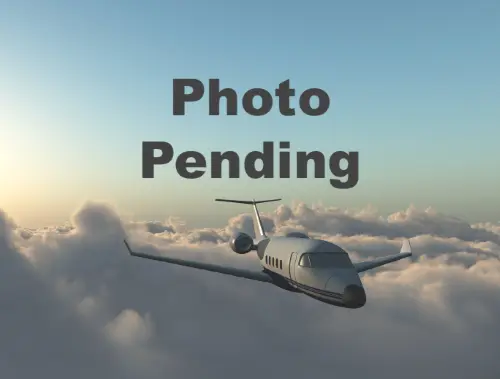The Future of Aircraft Leasing: Trends to Watch in 2025
Article Featured
As the aviation industry continues to evolve, aircraft leasing is transforming to meet new demands and shifting priorities. With the rapid pace of technological advancement and a greater focus on sustainability, the landscape of aircraft leasing is adapting. Here’s a look at key trends in aircraft leasing for 2025, including the rise of eco-friendly aircraft and increasing flexibility in leasing agreements, that will shape the industry’s future.
1. Increased Demand for Eco-Friendly Aircraft
Sustainability is no longer just a buzzword in aviation—it’s a priority. Airlines are increasingly focused on reducing their environmental impact, and eco-friendly aircraft are in high demand. As leasing companies expand their fleets with fuel-efficient and alternative-energy aircraft, businesses can lease eco-friendly models without the large upfront investment. This trend is particularly relevant as many countries push for net-zero emissions, making greener fleets an essential competitive edge.
Benefits of Leasing Eco-Friendly Aircraft:
- Reduced Operational Costs: Fuel-efficient aircraft reduce fuel expenses, leading to substantial cost savings.
- Compliance with Regulations: Eco-friendly aircraft help airlines comply with growing environmental regulations worldwide.
- Enhanced Brand Image: Operating greener aircraft can improve an airline’s brand perception among environmentally conscious consumers.
To explore available aircraft options, check out Global Plane Search’s aircraft leasing for a range of eco-friendly models designed for the future of aviation.
2. Flexible Leasing Agreements
A notable shift in aircraft leasing is the increased flexibility in lease terms. Airlines today need the agility to adjust fleets based on market demands, economic shifts, and unexpected challenges, like the recent pandemic. Leasing companies are responding by offering more customizable agreements, including short-term leases, variable lease rates, and power-by-the-hour (PBH) arrangements.
Key Benefits of Flexible Leasing:
- Reduced Financial Risk: Flexible leases allow airlines to adjust terms according to economic conditions, minimizing financial risks.
- Better Fleet Optimization: Airlines can adjust fleet sizes based on seasonal demands or route expansion.
- Improved Cash Flow Management: Payment structures like PBH can help manage costs more efficiently, aligning expenses with actual flight hours.
For airlines interested in exploring more flexible leasing arrangements, see Global Plane Search’s range of aircraft for lease to find an option that best suits your operational needs.
3. Growing Popularity of Used Aircraft Leasing
In 2025, leasing of used aircraft is projected to grow due to cost efficiency and availability. Leasing used aircraft is an attractive alternative for airlines looking to minimize expenses while expanding their fleets. The secondhand market offers well-maintained aircraft that come with lower lease rates, making it an appealing choice for both established and budget airlines.
Why Choose Used Aircraft Leasing?
- Cost Savings: Used aircraft are typically more affordable than new models, with lower lease rates and maintenance costs.
- Faster Access: The availability of used aircraft can reduce lead times, allowing airlines to respond quickly to demand spikes.
- Lower Depreciation Risk: Used aircraft have already experienced the majority of their depreciation, making them a financially prudent choice.
4. Digitalization in Aircraft Leasing
With advancements in digital technology, the aircraft leasing industry is becoming more data-driven. Digitalization allows for improved aircraft monitoring, predictive maintenance, and enhanced fleet management. From real-time tracking of aircraft usage to predictive analytics for maintenance needs, digital tools are revolutionizing leasing operations.
Advantages of Digitalized Leasing:
- Improved Maintenance Planning: Predictive analytics reduce unexpected downtime and maintenance costs.
- Enhanced Transparency: Real-time data on aircraft performance enables more transparent leasing relationships.
- Data-Driven Decision Making: Leasing companies can use data insights to make informed decisions, optimize fleet usage, and offer more personalized leasing options.
5. Rising Demand for Narrow-Body Aircraft
Another trend shaping the future of aircraft leasing is the increasing preference for narrow-body aircraft. These fuel-efficient and versatile planes are favored for short to medium-haul flights, particularly in markets with rising domestic travel. Leasing companies are meeting this demand by adding narrow-body aircraft to their fleets, allowing airlines to expand domestic routes affordably.
Why Narrow-Body Aircraft Are in Demand:
- Fuel Efficiency: Narrow-body aircraft are typically more fuel-efficient than wide-body models.
- Lower Operating Costs: Narrow-body planes are generally more economical to operate, making them ideal for budget-conscious airlines.
- Better Route Flexibility: These aircraft can service more routes, including shorter, less popular ones.
Preparing for the Future of Aircraft Leasing
The future of aircraft leasing is driven by flexibility, sustainability, and technological advancement. As 2025 approaches, staying informed on emerging trends and adapting to industry changes will be critical for airlines looking to thrive in a competitive market.
Stay ahead of the curve with our aircraft leasing services and secure a fleet that aligns with the latest aviation trends. Whether you're seeking eco-friendly models, flexible agreements, or digitalized fleet management, Global Plane Search has you covered.
Related Content
Aircraft Lease DefinitionCharter, Lease or Purchase an Aircraft?



